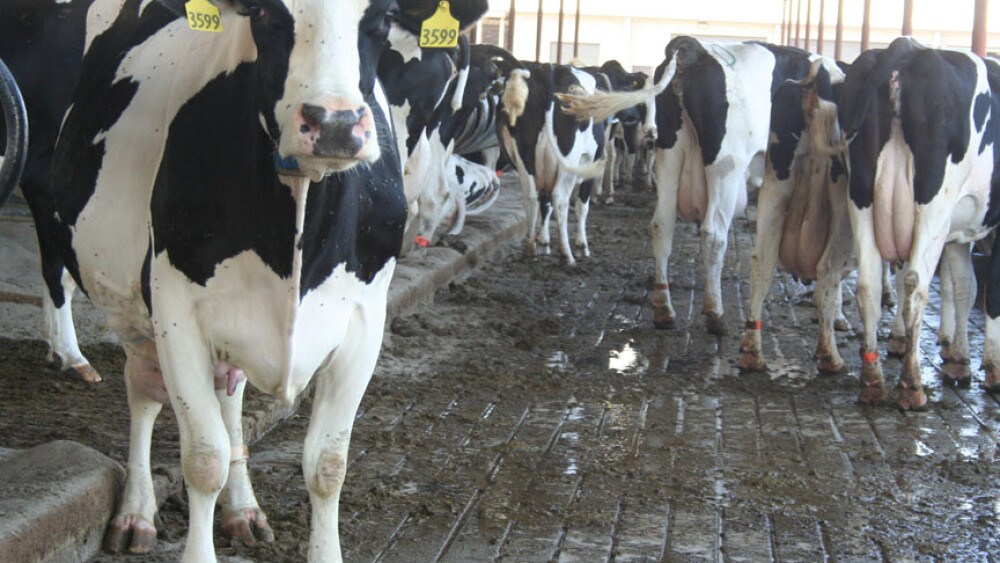If a calf struggles during its first 60 days of life, it’s going to carry that through all phases of production. Starting a calf, whether in a traditional beef or beef-on-dairy scenario, the right way is paramount to the lifetime health of that animal.
This is the message stressed by Dr. Taylor Engle, Four Star Veterinary Services, during episode eight of “The Future of Beef Show” podcast. He says success starts before a calf is born.
“There are a lot of really good genetics in the beef industry we can use. However, if you put that calf in an environment to fail, genetics does not play a factor,” he says. “We have to do everything right from an environmental piece to maximize the genetic potential.”
Check out the podcast to learn more about these five key messages discussed by Engle and the podcast’s hosts:
- Environment matters more than genetics. Engle emphasizes if you put a calf in an environment to fail, genetics won’t save it. Management and early life conditions are critical to an animal’s success.
Calf health starts before birth. Proper care of the cow before calving, quality colostrum and a clean birthing environment are crucial for a calf’s lifetime health.
Engle encourages producers to think about the cow’s condition before, during and after breeding.
“Everyone gets really fired up — and rightfully so — about colostrum. Not all colostrum is created equal,” he says. “It’s what we are doing to set that cow up to have the best colostrum for that calf. Whether it’s beef-on-dairy or native, the right vaccines for the right diseases at the right time matters.”
Communication is key across the production chain. Sharing information about calf health, vaccination history and management practices between different stages of production can significantly improve overall animal performance.
Engle encourages producers to record vaccination and treatment information and then share it. Communicating with the feedyard is important to help the feeder decide on how to treat cattle.
Don’t be quick to treat — understand the root cause. Instead of immediately administering antibiotics, veterinarians should first investigate the underlying management or environmental issues causing health problems.
“We were trained to think it’s a disease, and more often times than not, there is a disease present. But there’s been something along the process where we have stressed that animal and caused disease,” he explains. “We’re always looking at it from an environmental standpoint and a management standpoint — the calf isn’t the culprit. What’s going on? Why did that calf break with respiratory disease? They don’t spontaneously get sick. Something happened. Was it a weather, feed or stressful event?”
He adds management strategies and mentality can be keys to determining the cause of a sickness.
“It’s a hard thing — whether you’re a nutritionist or vet — to have that hard conversation with a producer, be upfront with them and say, ‘It’s something we’ve done,’” he says. “A lot of times, there’s management practices that messed up along the way, and the result is a disease.”
In his practice, he works with the producer to help them understand and recognize the management strategies to improve the outcomes.
“In the beef industry, a lot of the mentality is, ‘We’ve never done it this way,’” he says.
“In comparison, in the poultry and pig industries, producers will say, ‘If it increases my production, I’ll do it.’ They have the mentality of being willing to give something a try to see if it increases health.”Engle adds, “I always tell producers if you want A results, you got to give A effort,” he explains. “You can’t have a C -plus effort and expect A results.”
Stress management is more important than treatment protocols. Focus on reducing stress and creating optimal conditions for calves, rather than relying solely on medical interventions.
“The calves don’t lie,” Engle says.
He emphasizes the importance of careful observation, advising producers to “read calves every day” and make real-time adjustments.
Beef-on-Dairy Calf Health
Engle also has extensive experience with beef-on-dairy calf management and production and discussed how those animals compare to traditional beef calves, highlighting how multiple touch points and movements bring beef-on-dairy calves unique challenges — including different feeding systems and varied vaccine and management protocols at each location.
As a positive, he says, “In the beef-on-dairy space, we have all the data points, or we have the opportunity to collect all the data points. Then you can start making decisions.”
With this complex — but data-rich — production model, there is significant potential for improving calf health and performance.
Engle challenges producers to think holistically about animal health, management and production.
“It’s not the animal that’s usually causing the problems,” he says in summary. “It’s usually producer’s management or oversight. As farms have gotten bigger, the skill gap as we go higher actually closes. Everybody who has 10,000-head of cattle on feed, or more, probably knows a lot about feeding cattle. But what are you going to do for a competitive advantage that the next feedyard isn’t? I think a lot of that’s looking internally at your management strategies and your consulting team. It’s a team effort to get to where you want to be. Set those goals and look at what you need to do better to be where you want to be in the next five to 10 years.”












